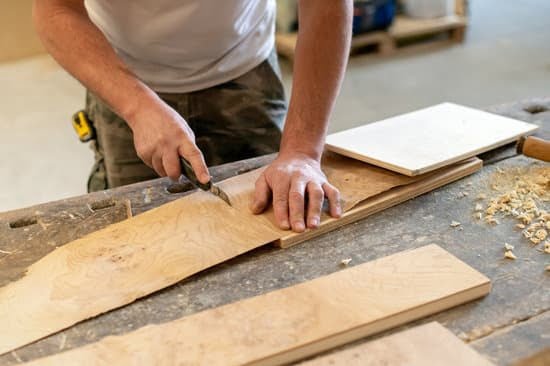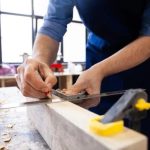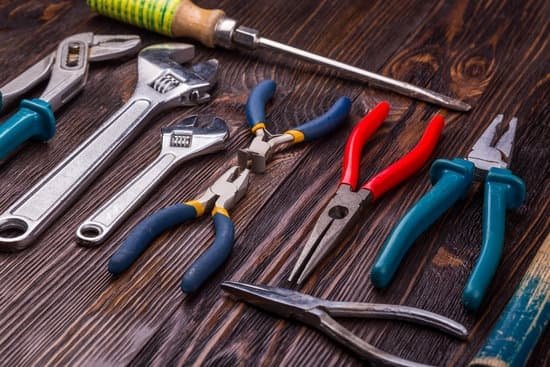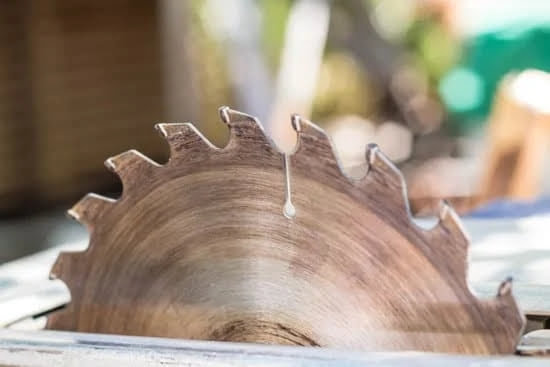Chalk paint has become increasingly popular in recent years due to its versatility and ease of use in home renovations. From furniture makeovers to wall transformations, this unique type of paint offers a wide range of creative possibilities.
But what about using chalk paint for bathroom woodwork? In this article, we will explore the characteristics and benefits of chalk paint, evaluate its suitability for bathroom woodwork, and provide step-by-step instructions on how to achieve a durable and water-resistant finish.
Chalk paint is known for its ability to adhere to various surfaces with minimal prep work. Its matte finish and velvety texture can give your bathroom woodwork a rustic or shabby-chic look that adds character to any space. Moreover, chalk paint is often praised for its forgiving nature-allowing beginners or DIY enthusiasts to easily correct mistakes with little hassle.
However, when it comes to high-moisture environments like bathrooms, the choice of paint requires careful consideration. Bathrooms are prone to humidity and splashing water, which can potentially affect the longevity and durability of certain paints.
In the following sections, we will dive deeper into the unique challenges of using chalk paint in bathrooms and offer expert advice on how to properly prepare and seal your bathroom woodwork for the best results. So let’s explore how you can effectively incorporate chalk paint into your bathroom renovation project.
Understanding chalk paint
Chalk paint has gained significant popularity in recent years due to its versatility and unique characteristics. This section will delve into the specifics of chalk paint, exploring its characteristics and highlighting its benefits for various projects.
One of the key features of chalk paint is its matte finish, which lends a soft and vintage look to furniture and other surfaces. Unlike traditional paints, chalk paint does not require extensive preparation or priming before application. It can adhere well to almost any surface, including wood, metal, glass, and even fabric.
Another benefit of using chalk paint is its excellent coverage. With just one or two coats, you can achieve full coverage and hide imperfections on the surface. Chalk paint also has a fast drying time, allowing for quicker completion of projects compared to other types of paint.
Additionally, one of the distinguishing factors of chalk paint is its ease of distressing. By sanding or using a damp cloth on specific areas after painting, you can achieve the popular shabby chic or distressed look that adds character and uniqueness to furniture.
| Characteristics | Benefits |
|---|---|
| Matte finish | Provides a soft and vintage look |
| Good coverage | Hides imperfections with fewer coats |
| Adheres well to various surfaces | No extensive priming required |
| Fast drying time | Allows for quicker project completion |
| Easily distressed | Adds character and uniqueness to furniture |
Chalk paint also offers the advantage of being environmentally friendly. Most chalk paint brands are low in volatile organic compounds (VOCs), making them a safer option for both the environment and your health. They do not emit strong odors, making them suitable for indoor applications.
Furthermore, chalk paint can be easily customized to match your desired color palette. Many manufacturers offer a wide range of pre-made colors, while others provide options for mixing pigments to create unique shades. This flexibility allows you to unleash your creativity and achieve the perfect look for your project.
Evaluating the suitability of chalk paint for bathroom woodwork
One of the first considerations when deciding to use chalk paint for bathroom woodwork is its suitability for a high-moisture environment. While chalk paint is versatile and can be used on various surfaces, it may not always be the best choice for bathroom woodwork. Bathrooms are prone to humidity and moisture, which can cause paint to warp, peel, or develop mold and mildew.
One of the main challenges of using chalk paint in a bathroom is its lack of water resistance. Unlike traditional oil-based or latex paints that create a barrier between the wood and moisture, chalk paint is porous and can absorb water. This makes it more susceptible to damage in a damp environment like a bathroom.
However, there are certain considerations that can make using chalk paint in a bathroom possible. Firstly, it’s important to assess the location of the woodwork within the bathroom. If the woodwork is away from direct water sources such as showers or sinks, it may be less exposed to moisture and therefore suitable for chalk paint.
Additionally, proper preparation and protection techniques can help improve the durability of chalk-painted bathroom woodwork. Applying a high-quality sealant or topcoat specifically designed for wet environments can provide an extra layer of water resistance. Regular maintenance such as wiping up excess moisture and avoiding harsh cleaning chemicals can also help prolong the life of the finish.
Despite these considerations, it’s important to recognize that using chalk paint in a bathroom comes with some risks. If you’re looking for a long-lasting finish that will withstand constant exposure to moisture, it may be wise to consider alternative options such as oil-based or latex paints specifically formulated for bathrooms.
Preparing bathroom woodwork for chalk paint
Cleaning the woodwork
Before applying chalk paint to bathroom woodwork, it is essential to ensure that the surface is clean and free of any grime or residue. Start by wiping down the woodwork with a mild soap and water solution using a soft cloth or sponge. Pay special attention to areas that are prone to accumulate moisture, such as around the sink or bathtub. Rinse off any soap residue and allow the woodwork to dry completely before proceeding.
Sanding for a smooth finish
Once the woodwork is clean and dry, it is important to sand the surface lightly to create a smooth and even base for the chalk paint. Use a fine-grit sandpaper, around 220 grit, and sand in the direction of the grain. This will help to remove any minor imperfections or roughness from the wood surface. Be sure to wipe away any dust generated from sanding using a tack cloth or damp cloth before moving on to priming.
Applying primer for better adhesion
Priming bathroom woodwork before applying chalk paint is crucial in promoting better adhesion and enhancing durability. Choose a high-quality primer specifically formulated for use on wood surfaces in high-moisture environments. Apply an even coat of primer using a brush or roller, making sure to cover all surfaces thoroughly. Allow the primer to dry according to manufacturer instructions before proceeding with the chalk paint application.
By properly cleaning, sanding, and priming bathroom woodwork before applying chalk paint, you can ensure optimal results and long-lasting durability. These preparation steps are especially important in high-moisture environments like bathrooms where excess moisture can cause paint adhesion issues if not properly addressed. Following these step-by-step instructions will help you achieve a professional-looking finish while protecting your bathroom woodwork from moisture-related damage.
Applying chalk paint to bathroom woodwork
Applying chalk paint to bathroom woodwork requires specific techniques and tools to ensure a smooth and even application. The key to achieving a flawless finish is to apply multiple thin coats of chalk paint rather than one thick coat. This section will provide detailed instructions on how to properly apply chalk paint to bathroom woodwork, ensuring a professional-looking result.
Before starting the painting process, it is important to gather the necessary tools. These include a quality paintbrush or foam roller, painter’s tape, drop cloths or plastic sheeting to protect surfaces from drips, and a clean damp cloth for quick clean-ups. Additionally, it is recommended to have a spray bottle filled with water nearby for misting the surface before applying each coat of chalk paint.
To begin, thoroughly clean the bathroom woodwork using a mild detergent and warm water. Remove any dirt, grime, or old finishes that may be present. Once the surface is clean and dry, lightly sand it using fine-grit sandpaper (220 grit). Sanding helps create an ideal surface for better adherence of the chalk paint.
Next, it is crucial to prime the bathroom woodwork before painting with chalk paint. Priming not only provides better adhesion but also improves the durability of the final finish in moist environments like bathrooms. Choose a quality primer suitable for wood surfaces and follow the manufacturer’s instructions for application.
Once the primer is dry, it’s time to start applying the chalk paint. Begin by stirring the paint thoroughly to ensure an even consistency. Using a brush or foam roller, apply a thin coat of chalk paint in long, smooth strokes following the grain of the woodwork. Avoid applying too much pressure as this can cause streaks or brush marks.
Allow each coat of chalk paint to dry completely before applying subsequent coats. Depending on factors such as humidity and temperature, this can take anywhere from 2-4 hours. Between coats, lightly sand any imperfections with fine-grit sandpaper and remove any dust using a clean, dry cloth.
Continue layering thin coats of chalk paint until the desired opacity is achieved. Remember, multiple thin coats are key to achieving a smooth and even finish. Avoid rushing the process by applying thick coats as this can result in an uneven appearance and longer drying times.
By following these techniques and utilizing the appropriate tools, applying chalk paint to bathroom woodwork can be a rewarding and transformative project. The next section will discuss sealing options for preserving the durability and water resistance of chalk-painted bathroom woodwork, ensuring its longevity in a high-moisture environment.
Achieving durability in the bathroom
When using chalk paint for bathroom woodwork, it is important to consider how to achieve durability and water resistance. While chalk paint itself offers a matte and velvety finish, it may not provide adequate protection against moisture and humidity in a high-moisture environment like the bathroom. Fortunately, there are several sealing options available that can help preserve the longevity of chalk-painted bathroom woodwork.
One popular option for sealing chalk-painted surfaces in the bathroom is to use a water-based polyurethane sealer. This type of sealer creates a clear protective layer over the chalk paint, providing excellent water resistance and durability. It also helps prevent chipping and staining, making it ideal for surfaces that frequently come into contact with water and moisture.
Another alternative is to use wax as a sealer for chalk-painted bathroom woodwork. Wax provides a soft sheen finish and enhances the depth of color in the paint. It also offers some protection against moisture, although it may require regular reapplication to maintain its effectiveness. It’s important to note that while wax can be used on bathroom woodwork, it may not provide as much water resistance as other sealers like polyurethane.
In addition to these options, there are also specialized sealers available specifically designed for chalk paint. These sealers are formulated with additives that enhance moisture resistance and make them suitable for bathrooms or other high-moisture areas. Before choosing a sealer, be sure to carefully read and follow the manufacturer’s instructions to ensure compatibility with your chosen chalk paint brand.
| Sealing Option | Description |
|---|---|
| Water-based polyurethane sealer | A clear protective layer that offers excellent water resistance and durability. |
| Wax | A soft sheen finish that enhances color depth, but may require regular reapplication for maintenance. |
| Specialized chalk paint sealers | Formulated with additives for enhanced moisture resistance, making them suitable for high-moisture environments like bathrooms. |
By choosing the appropriate sealing option for chalk-painted bathroom woodwork, you can enhance the durability and water resistance of your project. Remember to properly prepare the woodwork by cleaning, sanding, and priming before applying chalk paint. Additionally, follow the manufacturer’s instructions for both the chalk paint and the chosen sealer to ensure optimal results. With proper sealing and maintenance, your chalk-painted bathroom woodwork can retain its beauty and functionality for years to come.
Maintaining chalk-painted bathroom woodwork
Once you have completed your chalk-painted bathroom woodwork, it is essential to know how to properly maintain it to keep it looking beautiful for years to come. While chalk paint is known for its durability, taking a few simple steps can go a long way in preserving its finish and ensuring its longevity in a high-moisture environment like a bathroom.
- Regular cleaning: One of the great benefits of chalk paint is that it is easy to clean. To remove dust or surface dirt, simply use a soft cloth or a feather duster to gently wipe the woodwork. In case of any spills or stains, use a mild soap or detergent mixed with water and a soft sponge or cloth. Avoid using harsh chemicals or abrasive cleaners as they can potentially damage the painted surface.
- Preventing water damage: Although chalk paint is relatively resistant to water, excessive exposure to moisture can still cause issues over time. To prevent water damage, be diligent about wiping up any spills as soon as they occur. Use coasters or trays under toothbrush holders, soap dispensers, and other items that may come into contact with water frequently. Installing proper ventilation in your bathroom also helps reduce moisture levels.
- Retouching when necessary: No matter how well you maintain your chalk-painted woodwork, there may be instances where touch-ups are needed due to wear and tear or accidental damage. Fortunately, patching up small areas is straightforward with chalk paint. Simply sand down any rough spots or peeling paint gently, clean the surface thoroughly, and apply a small amount of chalk paint using either a brush or roller.
By following these tips for routine cleaning and maintenance of your chalk-painted bathroom woodwork, you can enjoy the beauty and charm of this unique finish for years to come while keeping it in excellent condition.
Inspiring bathroom woodwork ideas using chalk paint
In recent years, chalk paint has become increasingly popular for its versatility and ease of use in home renovations. From furniture to cabinetry, this unique type of paint has the ability to effortlessly transform any piece with its matte, velvety finish. But what about using chalk paint for bathroom woodwork?
Can it withstand the high-moisture environment and still maintain its durability and beauty? The answer is yes, and in this section, we will explore some inspiring bathroom woodwork ideas using chalk paint that showcase the transformative power of this creative solution in bathroom renovations.
Refreshing Vanity Cabinets
One way to incorporate chalk paint into your bathroom renovation is by utilizing it on your vanity cabinets. Whether your existing cabinets are made of wood or laminate, chalk paint can provide a fresh new look. Consider choosing a light, pastel color such as pale blue or mint green to create a calming atmosphere in your bathroom. Pair it with updated hardware and you’ll have a vanity that looks brand new without breaking the bank.
Accentuating Trim Work
For those looking to add visual interest and texture to their bathroom woodwork, chalk paint can be used to accentuate trim work such as baseboards, crown molding, or window frames. Opting for a contrasting color or even a metallic shade can create a stunning focal point in your bathroom while adding depth and dimension to the space.
Transforming Built-In Shelves
Another great idea for incorporating chalk paint into your bathroom renovation is by transforming built-in shelves. Whether they are recessed or freestanding, painting them with chalk paint can give them a whole new lease on life. Consider using a darker shade like charcoal gray or navy blue for a dramatic effect or select a lighter hue for an airy and modern look.
By showcasing these inspiring examples of how chalk paint can be used in bathroom renovations, we hope to inspire you to explore the possibilities of using this versatile paint on your own bathroom woodwork. Whether you’re looking for a complete transformation or just a subtle update, chalk paint can provide the durability and aesthetic appeal needed for your high-moisture environment.
So don’t be afraid to get creative and try something new – the transformative power of chalk paint awaits you in your next bathroom project.
Conclusion
In conclusion, using chalk paint for bathroom woodwork can be a fantastic solution for those looking to update their space with a creative and versatile product. Throughout this article, we have explored the characteristics and benefits of chalk paint, evaluated its suitability for high-moisture environments like bathrooms, and provided step-by-step instructions on preparing and applying chalk paint to bathroom woodwork.
One of the key advantages of using chalk paint is its ability to adhere well to various surfaces, including wood, while providing a smooth and even finish. Additionally, chalk paint offers flexibility in terms of color options, allowing homeowners to achieve unique and personalized looks in their bathrooms. The transformative power of chalk paint has been seen through stunning examples and design possibilities showcased in this article.
While it is important to properly clean, sand, prime, and apply multiple thin coats of chalk paint to bathroom woodwork for optimal results, durability can also be achieved through various sealing options available. These sealants preserve the longevity and water resistance of the finish, ensuring that your bathroom woodwork remains beautiful for years to come.
In summary, using chalk paint for bathroom woodwork is not only a practical choice but also an opportunity for creativity in home renovations. From refreshing outdated cabinets to giving new life to a vanity or shelving unit, the positive impact of chalk paint cannot be underestimated.
We encourage readers to embrace this creative solution in their homes and explore the endless possibilities that chalk paint brings to their bathrooms. Transform your space with this versatile product and enjoy the beauty it can bring to your everyday life.
Frequently Asked Questions
Is chalk paint OK in bathroom?
Chalk paint can be a suitable option for use in bathrooms. However, it’s important to consider the specific conditions and usage of the bathroom before deciding if chalk paint is appropriate.
Although chalk paint is known for its durability and ability to adhere well to different surfaces, it may not be the best choice for areas that regularly come into contact with water or excessive moisture. In such cases, it is advisable to opt for a specialized bathroom paint that offers better resistance against humidity and moisture.
How do you seal chalk paint in a bathroom?
Sealing chalk paint in a bathroom helps protect the painted surface and enhance its durability, especially in an environment prone to moisture and humidity. To seal chalk paint in a bathroom, it is recommended to apply a water-based polyurethane sealer specifically designed for high-moisture areas like bathrooms.
Start by cleaning and ensuring that the painted surface is free from any dirt or debris. Then, using a brush or roller, carefully apply thin coats of the sealer evenly across the painted area, allowing sufficient drying time between each coat as directed by the manufacturer.
What is the best sealer for chalk paint in bathrooms?
When selecting a sealer for chalk paint in bathrooms, it’s crucial to choose one that offers adequate protection against moisture and humidity while preserving the desired appearance of the painted surface. Water-based polyurethane sealers are commonly recommended for this purpose due to their resistance to water damage and yellowing over time.
Look for a sealer specifically formulated for high-moisture areas or ones suited for bathroom applications. Reading product reviews and consulting with professionals at your local hardware store can also provide helpful insights into finding the best sealer option that meets your specific needs.

Hi everyone! I’m a woodworker and blogger, and this is my woodworking blog. In my blog, I share tips and tricks for woodworkers of all skill levels, as well as project ideas that you can try yourself.





